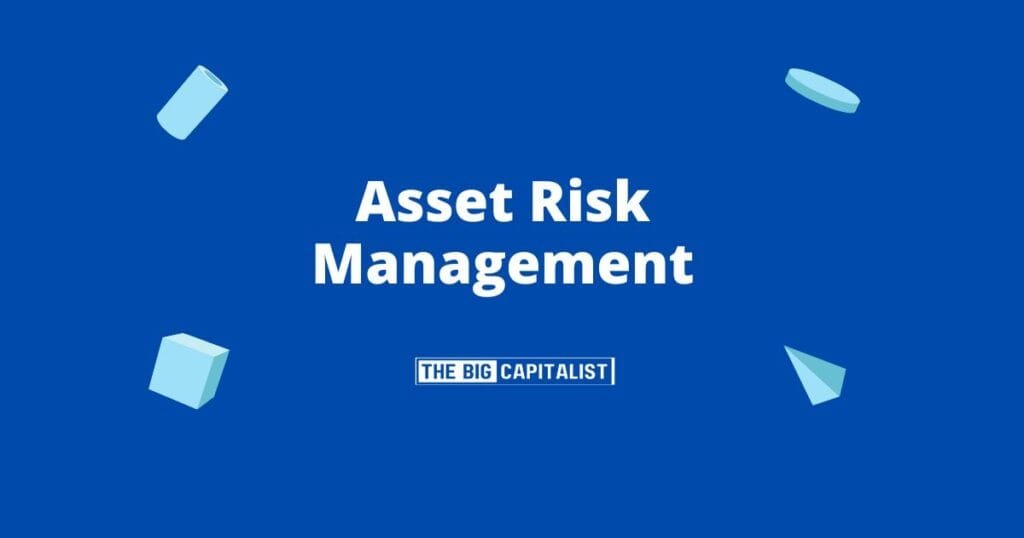Asset risk management is a systematic approach to safeguarding assets against potential threats. It involves continuous monitoring of assets to identify risks early.
The aim is to protect investments and enhance financial stability by minimizing losses. This process requires a deep understanding of both internal and external risk factors.
Asset risk management encompasses various types of risks, including market, credit, and operational risks. Each type of risk requires specialized strategies for effective management.
By understanding asset risk management, organizations can better prepare for uncertainties. This ensures the long-term sustainability and growth of their asset portfolios.
The Importance of Risk Assessment in Asset Management
Risk assessment is a crucial step in asset management that allows organizations to systematically evaluate potential threats. This process helps prioritize risks based on their potential impact and likelihood.
Effective risk assessment involves a thorough analysis of all possible internal and external risks. This helps organizations allocate resources more efficiently and develop targeted risk mitigation strategies.
Key components of a robust risk assessment include:
- Identifying potential risks and their sources
- Analyzing the potential impact of each risk
- Evaluating the likelihood of occurrence for each identified risk
Incorporating risk assessment into asset management enables proactive decision-making. This leads to enhanced security for investments and supports long-term business objectives. Identifying risks early can significantly reduce potential damage and financial losses.
Identifying potential risks is the first step in a successful asset risk management process. Organizations must consider various types of risks, such as market, credit, and operational risks. This step requires a deep understanding of the business environment and potential external threats that could impact assets.
Once risks are identified, analysis is crucial to understanding their potential impact on the organization. Effective analysis involves evaluating the severity and likelihood of each risk, allowing businesses to focus on the most critical issues. By understanding these factors, companies can develop more effective mitigation plans and allocate resources strategically to protect their assets.
Developing a Robust Risk Management Plan
A robust risk management plan is essential for addressing potential asset risks effectively. It serves as a roadmap, outlining strategies to mitigate the identified risks and minimize their impact. The plan should be comprehensive, covering all asset classes and considering the organization’s risk appetite.
To build this plan, involve stakeholders from various departments to ensure all perspectives are considered. Regular updates to the plan are vital, reflecting changes in the risk environment and business objectives. By keeping the plan dynamic and aligned with the organization’s needs, businesses can maintain resilience against emerging threats and challenges.
Strategies for Mitigating Asset Risks
Mitigating asset risks requires a multifaceted approach, tailoring strategies to the specific types of risks faced. By implementing targeted measures, organizations can better protect their assets and reduce potential financial impacts. Each strategy should align with the organization’s broader risk management goals.
To effectively mitigate risks, consider the following strategies:
- Diversification of asset portfolio
- Utilization of insurance policies
- Implementation of hedging techniques
- Regularly updating risk assessments
- Establishing contingency plans
Each strategy has its unique advantages and can be applied individually or in combination. Diversification, for instance, spreads risk across different assets, whereas insurance provides a safety net against specific losses. Hedging, on the other hand, can offset potential losses with financial instruments.
By carefully selecting and implementing these strategies, organizations can create a resilient asset management framework. This proactive approach not only mitigates risks but also enhances long-term stability and performance.
Leveraging Technology for Enhanced Asset Risk Management
Technology plays a crucial role in modern asset risk management. With advanced tools and software, organizations can achieve higher accuracy and efficiency. These technologies facilitate timely risk detection and response, ensuring better asset protection.
Artificial intelligence (AI) and machine learning (ML) are transforming risk management processes. They offer predictive insights and automate routine tasks, allowing managers to focus on strategic decisions. Additionally, asset management systems provide real-time data, enabling swift and informed responses to emerging risks. By embracing such technologies, businesses can stay ahead in the ever-evolving risk landscape.
Regulatory Compliance
Adhering to regulatory standards is vital for effective asset risk management. These regulations are designed to safeguard financial markets and protect stakeholders from unforeseen risks. Non-compliance can lead to significant penalties and reputational damage.
Organizations must stay updated with evolving regulatory requirements. This involves regularly reviewing risk management practices to align with current laws. Implementing a robust compliance framework ensures that asset management strategies remain effective and legally sound. By prioritizing regulatory compliance, businesses not only mitigate risks but also enhance their credibility and operational efficiency.
Case Studies
Successful asset risk management is best illustrated through real-world examples. One notable case involves a multinational corporation navigating financial turmoil. By implementing stringent risk assessment measures, the company identified potential vulnerabilities early on. This proactive approach allowed them to restructure assets and reduce exposure.
Another example highlights a tech firm utilizing advanced software for risk mitigation. They leveraged AI to predict market trends and adjust asset allocation accordingly. This technology-driven strategy enabled them to maintain stability during volatile periods. Both cases underline the importance of tailored risk management strategies and the role of innovation in safeguarding assets.
Creating a Risk-Aware Culture Within Your Organization
Building a risk-aware culture is crucial for effective asset risk management. It starts with educating employees about the significance of risk assessment in their daily roles. Training sessions and workshops can highlight the potential impacts of unmanaged risks.
Leadership plays a pivotal role in fostering this culture. Management must set an example by prioritizing risk management in decision-making processes. Encouraging open communication and transparency about potential risks is key. By embedding risk awareness into the organizational fabric, companies can empower employees to contribute proactively to risk management efforts, resulting in stronger, more resilient operations.
Conclusion
Incorporating asset risk management into your organizational strategy enhances resilience and ensures sustained growth. By aligning risk management with core business objectives, organizations can effectively anticipate and mitigate potential threats. This proactive approach not only safeguards assets but also fosters a stable and secure operational environment.
Frequently asked question
Q: What is asset risk management?
A: Asset risk management is a process of identifying, assessing, and mitigating potential threats to an organization’s assets financial, physical, or intellectual to protect their value and ensure stability.
Q: Why is risk assessment important in asset management?
A: Risk assessment helps identify threats based on how likely they are and their impact. This allows for better use of resources and early action. It reduces potential losses and supports long-term goals.
Q: Which strategies are most effective for mitigating asset risks?
A: Common strategies include diversifying the asset portfolio, using insurance policies, employing hedging techniques, regularly updating risk assessments, and establishing contingency plans.
Q: How does technology enhance asset risk management?
A: Technologies like AI/ML and real-time asset management systems provide predictive insights, automate routine monitoring, and deliver up-to-date data allowing faster detection and response to emerging risks.
Q: What role does regulatory compliance play in asset risk management?
A: Adhering to industry regulations ensures that risk management practices are legally compliant, reduces penalties, and boosts stakeholder confidence by demonstrating robust, standardized controls.
















